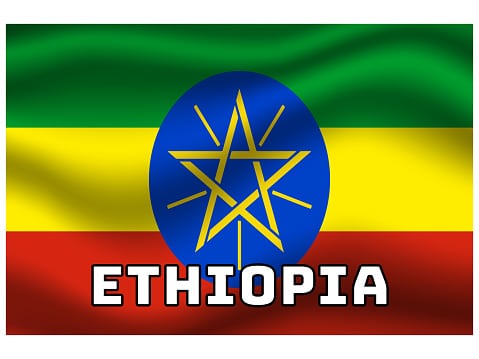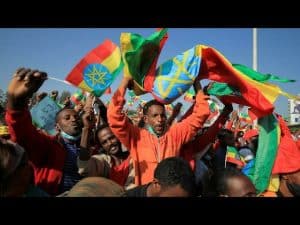Headlines
Ethiopia: From the Cradle of Humanity to the Crossroads of Africa

Ethiopia: A Land of Ancient Civilizations and Diverse Cultures
Ethiopia is one of the oldest countries in the world, with a history that spans thousands of years. It is also one of the most diverse countries in Africa, with more than 80 ethnic groups and languages. Ethiopia’s rich and varied heritage reflects its geographic location at the crossroads of Africa, Asia, and Europe, as well as its interactions with different peoples and cultures throughout history.
See Population, Official Language And More…

Ethiopia
The origins of Ethiopia can be traced back to the prehistoric era, when early humans inhabited the region. One of the most famous fossils of human ancestors, known as “Lucy”, was discovered in the lower Awash River valley in Ethiopia in 1974. Lucy belonged to a species called Australopithecus afarensis, which lived about 3.2 million years ago and may have been an ancestor of modern humans.
The first known civilization to emerge in Ethiopia was the kingdom of Dʾmt (Daʾamat), which was established in the 10th century BC by people who spoke a Semitic language called Geʿez. Dʾmt was located in the northern highlands of Tigray, where it developed trade and diplomatic relations with South Arabia and other regions. Dʾmt also adopted some aspects of South Arabian culture, such as writing, religion, and art.
Dʾmt was succeeded by the kingdom of Aksum, which rose to power in the 1st century AD and became one of the most influential states in the ancient world. Aksum expanded its territory to include parts of present-day Eritrea, Sudan, Somalia, Yemen, and Egypt. Aksum was also a major trading power, connecting Africa with Asia and Europe through its ports on the Red Sea and the Indian Ocean. Aksum produced coins, monuments, and obelisks that displayed its wealth and sophistication.
Aksum was also one of the first African kingdoms to adopt Christianity as its official religion. In the early 4th century AD, King Ezana converted to Christianity after being influenced by a Syrian missionary named Frumentius. Ezana also declared himself “king of kings” of Ethiopia, using the Greek term Aithiopia to refer to his realm. This was the first time that the name Ethiopia was used to describe the country.
Aksum’s decline began in the 7th century AD, when Islam spread across Arabia and North Africa. Aksum lost some of its trade routes and territories to Muslim invaders and rivals. Aksum also faced internal challenges, such as environmental degradation, social unrest, and dynastic disputes. By the 10th century AD, Aksum had collapsed and was replaced by several smaller kingdoms and principalities.
One of these kingdoms was the Zagwe dynasty, which ruled over central and northern Ethiopia from the 10th to the 13th centuries AD. The Zagwe dynasty is best known for building a series of rock-hewn churches at Lalibela, which are considered among the wonders of the world. The Zagwe dynasty also maintained contact with other Christian kingdoms in Africa and Asia, such as Nubia and Armenia.
The Zagwe dynasty was overthrown by a rebel leader named Yekuno Amlak, who claimed descent from the ancient Aksumite kings. Yekuno Amlak established the Solomonic dynasty, which claimed to be related to King Solomon and Queen Sheba of biblical fame. The Solomonic dynasty ruled Ethiopia for more than 700 years, from the 13th to the 20th centuries AD.
The Solomonic dynasty faced many challenges and changes during its long reign. It had to deal with invasions from Muslim states such as Adal and Egypt, as well as European powers such as Portugal and Italy. It also had to cope with internal conflicts among regional lords, ethnic groups, and religious sects. It also witnessed cultural transformations such as the spread of Islam, the introduction of firearms, and the emergence of modern education.
The Solomonic dynasty reached its peak under Emperor Menelik II, who ruled from 1889 to 1913. Menelik II expanded Ethiopia’s borders to include most of its current territory. He also modernized Ethiopia’s economy, infrastructure, and military. He is most famous for defeating Italy at the Battle of Adwa in 1896, which preserved Ethiopia’s independence from colonialism.
The Solomonic dynasty came to an end in 1974, when Emperor Haile Selassie I was overthrown by a military coup led by Mengistu Haile Mariam. Mengistu established a socialist dictatorship that lasted until 1991. During this period, Ethiopia suffered from civil wars, famines, human rights violations, and foreign interventions. Ethiopia also lost its coastal province of Eritrea, which became an independent state in 1993.
Since 1991, Ethiopia has been undergoing a process of political and economic reform. It has adopted a federal system of government that grants autonomy to its regions and ethnic groups. It has also embraced a market economy that has attracted foreign investment and boosted growth. It has also improved its relations with its neighbors and the international community. However, Ethiopia still faces many challenges, such as poverty, corruption, ethnic conflicts, and environmental issues.
Ethiopia is a country that has a long and rich history that spans from the dawn of humanity to the present day. It is a country that has witnessed the rise and fall of civilizations, the glory and tragedy of empires, the diversity and unity of cultures, and the struggle and resilience of its people. Ethiopia is a country that has a lot to offer to the world, as well as a lot to learn from it.
- Ethiopia is one of the few African countries that has never been colonized by a foreign power, except for a brief occupation by Italy from 1936 to 1941. Ethiopia has a long and proud history of resistance and independence, dating back to the ancient kingdoms of Aksum and Dʾmt. Ethiopia is also the only African country that has its own alphabet, the Geʿez script, which is used to write Amharic and other languages.
- Ethiopia is a federal parliamentary republic with a multi-party system. The current president is Sahle-Work Zewde, who was elected by the parliament in 2018 as the first woman president of Ethiopia. The current prime minister is Abiy Ahmed, who was appointed by the ruling coalition in 2018 after the resignation of his predecessor. Abiy Ahmed has initiated a series of political and economic reforms, as well as a peace process with Eritrea, which ended a 20-year state of war between the two countries. However, he has also faced challenges from ethnic and regional conflicts, especially in the northern Tigray region, where a military intervention in 2020 sparked a humanitarian crisis.
- Ethiopia is a diverse and multicultural country, with more than 80 ethnic groups and languages. The largest ethnic groups are the Oromo (34.4%), Amhara (27%), Somali (6.2%), and Tigray (6.1%). The official national language is Amharic, but other languages such as Oromo, Somali, and Tigrinya are also widely spoken. Ethiopia is also home to various religions, with Christianity being the dominant faith (62%), followed by Islam (33.9%), and traditional beliefs (2.7%). Ethiopia has a rich cultural heritage, with influences from ancient civilizations, neighboring countries, and foreign contacts. Ethiopia is known for its distinctive music, art, literature, cuisine, and architecture.





